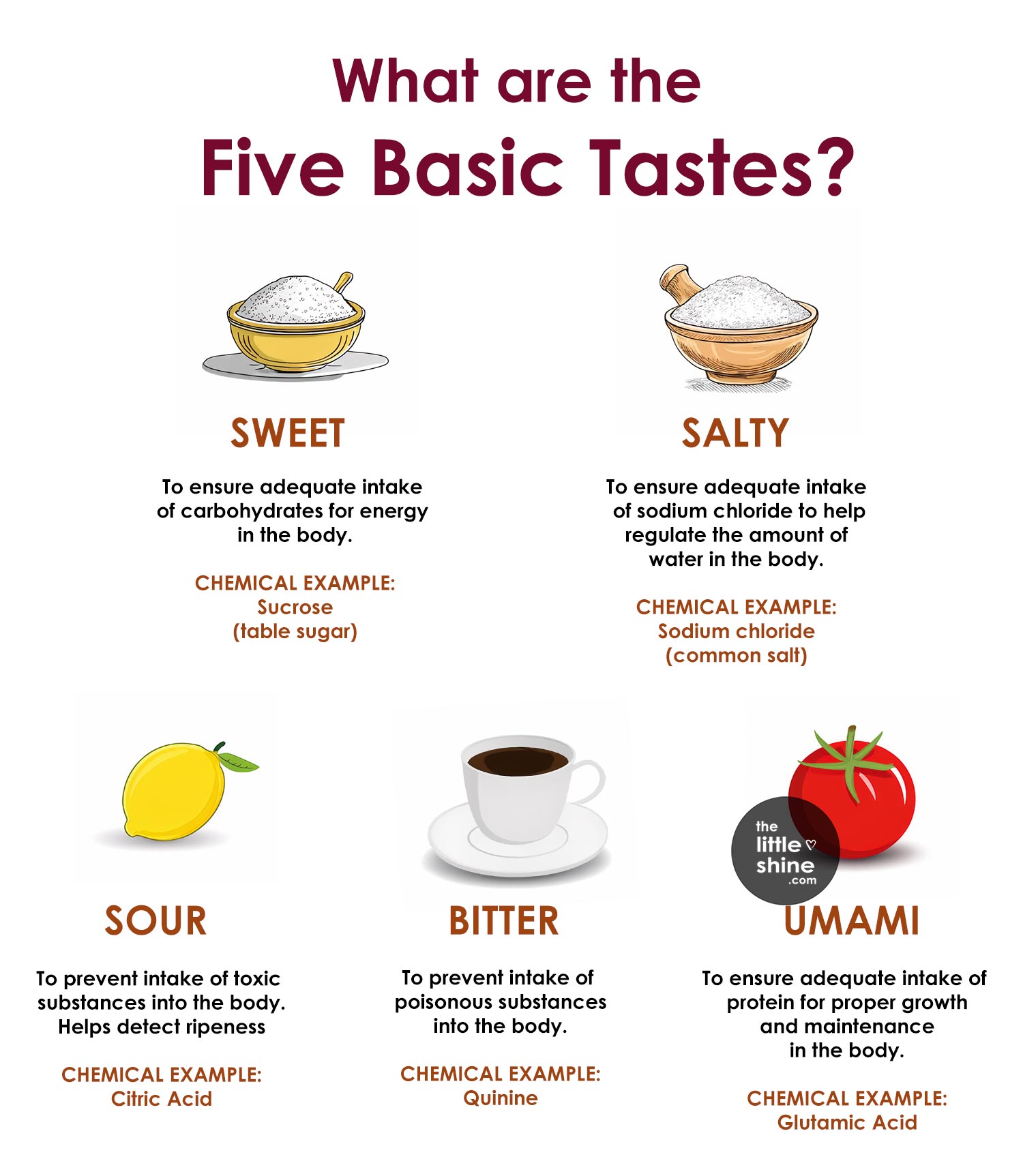Do you sometimes find some food too sweet or too salty? Well, thanks to the different types of tastes that we have.

There are 5 basic tastes that we can taste – sweet, sour, salty, bitter and umami. Each of these tastes has a different function. So, let’s talk about them!
What is the Function of Taste?
Taste, also called as “Appetitive Taste”, comes in five different types. Taste is a sensation that we feel. So basically, when we eat food, our tongue senses the taste and we can feel whether the food we eat is sweet, salty, sour, bitter or umami.
The 5 Basic Tastes and the Roles They Play
1. Sweetness
Sweetness is the taste we feel due to all types of sugars. We feel sweetness to ensure that there is adequate intake of carbohydrates in the body to be able to replenish lost energy. The function of this taste is to build tissues and also calm the nerves. You can taste sweetness in fruits, grains, natural sugars, milk etc.
2. Sourness
Sour tastes can help us detect any type of acids in the food we eat. It can be eaten in small quantities as too much consumed can be unpleasurable. The function of this taste helps cleanse tissues and can increase the absorption of minerals in the body. It can also help detect bad and good food. You can taste sourness in sour types of fruits, yogurt, fermented foods etc.
3. Saltiness
Saltiness, also called as sodium, is the marker to taste “saltiness”. Salty food, just like sour food, be eaten in small quantities as too much consumed can be unpleasurable. The function of saltiness is to help improve taste, lubricate the tissues and to stimulate digestion. It also regulates water and ion homeostasis in the body. You can taste saltiness in natural salts, sea vegetables etc.
4. Bitterness
Bitterness is a marker to detect something poisonous and the body will naturally reject the item. Well, not everything that’s bitter can be poisonous and that certain foods in small amounts can be good for the body like coffee for example. The function of bitterness is to detoxify the body and also lighten the tissues. You can taste bitterness in dark leafy green vegetables, herbs and spices etc.
5. Umami
The taste of “umami” has recently been added into the basic taste chart. Umami is also known as monosodium glutamate. It is also called as a “delicious savoury taste”, in Japanese. Umami is known to taste like “meaty”, “broth-like” etc.
It is to ensure that the body has adequate intake of protein, so as to have proper growth and to maintain the body. Thus, umami is considered a important and fundamental part of nutrition.
You can taste umami in all kinds of protein like milk, fish, meat, eggs, certain types of beans etc. The taste umami helps to digest these proteins (which are made up of amino acids).
Frequently Asked Questions:
1. Is “hot and spicy” a type of taste?
No, hot and spicy is not a type of taste, but is a type of sensation we feel of pain and heat.
The reason we feel “pain and heat”, when we eat something hot and spicy is because of a compound called ‘capsaicin’, which is found in chilies and peppers.
2. Is it true that a common cold can affect the tongue’s ability to taste certain flavours?
Yes, it is true that a common old can affect the tongue’s ability to taste a certain flavour because odors cannot reach the sensory cells in the nose.